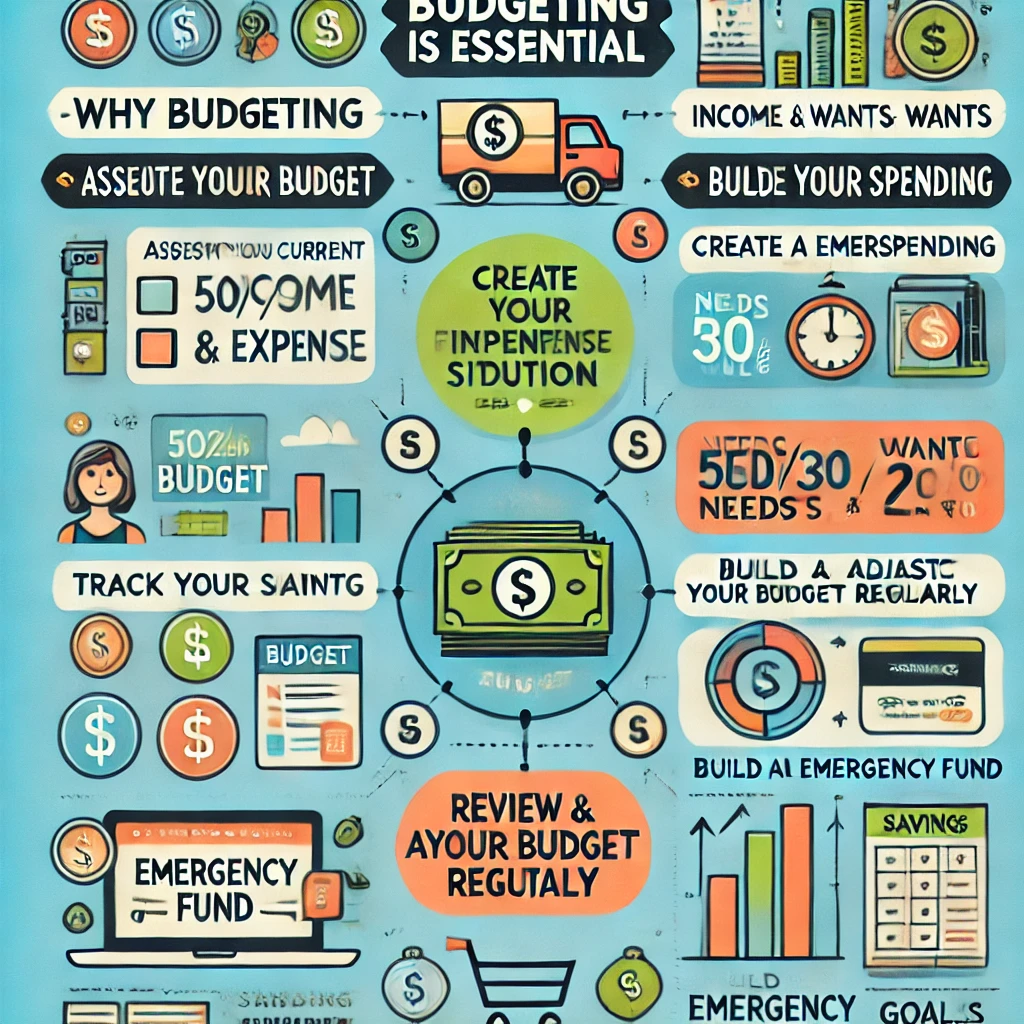
Introduction to the 50/30/20 Budget Rule
Achieving financial success doesn’t have to be complicated. The 50/30/20 budget rule provides a simple yet effective framework to manage your money, ensuring you cover essentials, enjoy life’s little luxuries, and save for the future. If you’re looking for a clear path to financial stability, this rule is an excellent starting point.
What is the 50/30/20 Budget Rule?
Definition and Overview
The 50/30/20 rule is a budgeting guideline that divides your after-tax income into three categories:
- 50% for Needs: Essential expenses like housing, utilities, groceries, and transportation.
- 30% for Wants: Non-essential spending, such as entertainment, dining out, and hobbies.
- 20% for Savings: Includes savings, investments, and debt repayment.
Origins of the Rule
Popularized by Senator Elizabeth Warren in her book All Your Worth: The Ultimate Lifetime Money Plan, this rule simplifies budgeting while encouraging balanced financial habits.
Benefits of the 50/30/20 Budget Rule
Simplicity and Flexibility
This rule is easy to understand and adapt, making it accessible for beginners and experienced budgeters alike.
Encouraging Balanced Spending
It ensures you’re not overspending in one area at the expense of another, promoting financial well-being.
Helping You Save Consistently
By allocating a fixed portion to savings, the rule builds a strong foundation for achieving financial goals.
How to Implement the 50/30/20 Budget Rule
Step 1: Calculate Your After-Tax Income
Determine your monthly income after taxes.
- Include: Salary, freelance earnings, rental income, or other sources.
- Adjust for irregular income: Use an average based on the past 6–12 months.
Step 2: Allocate 50% for Needs
Essential expenses should not exceed half of your income.
- Examples of needs:
- Rent or mortgage payments
- Utilities (electricity, water, internet)
- Groceries
- Minimum debt payments
- Tips: If your needs exceed 50%, look for ways to reduce expenses, such as downsizing or negotiating bills.
Step 3: Allocate 30% for Wants
Wants include non-essential items and experiences that enhance your quality of life.
- Examples of wants:
- Streaming subscriptions
- Dining out
- Vacations
- Gym memberships
- Tip: Be mindful of overspending in this category. Tracking discretionary expenses helps you stay within limits.
Step 4: Allocate 20% for Savings
This portion is dedicated to building wealth and paying off debt.
- Priority 1: Create an emergency fund with 3–6 months’ worth of expenses.
- Priority 2: Pay off high-interest debt to reduce financial strain.
- Priority 3: Invest in long-term goals, like retirement or buying a home.
Adapting the 50/30/20 Rule to Your Lifestyle
Adjusting Percentages for Unique Circumstances
If you have high fixed expenses or specific financial goals, modify the percentages to suit your needs. For instance, a 60/20/20 split might work better if housing costs are high.
Using the Rule for Couples and Families
Combine incomes and set joint goals. Allocate shared expenses to the “Needs” category and divide “Wants” individually.
Making It Work with Irregular Incomes
During high-income months, prioritize savings and debt repayment to prepare for leaner periods.
Tools and Resources to Simplify Budgeting
- Budgeting Apps: Mint, YNAB (You Need A Budget), and PocketGuard can track spending and categorize expenses.
- Templates: Use printable 50/30/20 budget templates to create a clear plan.
- Automation: Set up automatic transfers to savings accounts and bill payments to stay consistent.
Common Mistakes to Avoid
Misclassifying Needs and Wants
Be honest about what’s truly essential. For example, dining out is a want, while groceries are a need.
Ignoring Irregular Expenses
Budget for annual or irregular costs, such as car maintenance or holiday gifts, by spreading them out monthly.
Failing to Reassess Your Budget
Your financial situation may change. Review your budget every 3–6 months to ensure it remains effective.
Long-Term Benefits of the 50/30/20 Rule
Building Financial Resilience
A structured approach to budgeting helps you handle unexpected expenses and emergencies with ease.
Achieving Your Savings Goals Faster
Consistently setting aside 20% for savings accelerates your path to financial milestones, such as buying a home or retiring early.
Enjoying a Balanced Financial Life
This rule strikes a balance between enjoying the present and planning for the future, ensuring long-term financial well-being.
Read more…
- Best Step-by-Step Guide to Budgeting for a Wedding in 2025
- How to Stick to Your Grocery Budget Without Compromising on Qualit
- What is Debt Consolidation and How Does it Work?
FAQs About the 50/30/20 Budget Rule
- Is the 50/30/20 rule suitable for low-income earners?
Yes, but you may need to adjust the percentages to prioritize needs and savings. - How can I apply the rule if my income fluctuates?
Use an average income for budgeting and prioritize savings during high-income months. - What if my essential expenses exceed 50% of my budget?
Look for ways to reduce housing or utility costs or adjust the rule to a 60/20/20 split. - Can I use this rule to pay off debt faster?
Absolutely! Use the savings portion to aggressively tackle high-interest debt. - How often should I review my budget?
Review your budget monthly or quarterly to account for changes in income or expenses.
